We New Zealanders love our cars, as evidenced by our high rate of car ownership and how much we drive them. We have the third highest rate of vehicle ownership in the OECD. The total distance driven increased by 16% (2% per year) between 1997/98 and 2003–06; compared with a population increase of 7% over same period (NZTA).
Like the canary in the coal mine, we can gauge our increased car use, and decreased use of active transport, by measuring how kids get to school. In the late eighties, 12% of primary school journeys and 19% of secondary school journeys were by bike, but by 2010–2014 this had fallen to 2% and 3% respectively (NZTA 25 Years of Travel).
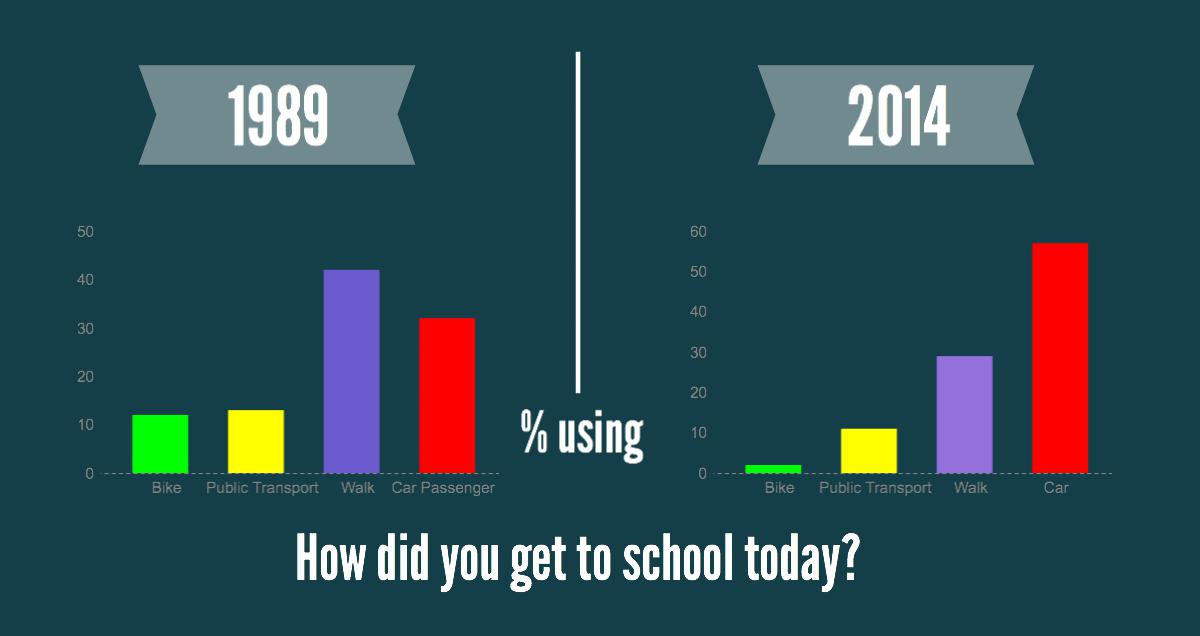
Cars are a convenient way to get around. So convenient that it is easy to lose sight of the costs associated with car use. Those costs are significant on a personal/household level and to our environment, our health and our economy.
In New Zealand, vehicle emissions account for one-quarter of net CO2 emissions and light vehicles account for approximately 65% of those. That’s about 16% of CO2 from light vehicle use. In addition, vehicles cause air, water and noise pollution.
In 2015 the Government spent $3.5 billion on roads and $390 million on road police and road safety education (NZ Automobile Association (AA) article ‘Taxing Truths’ by Peter King).
Congestion has an economic impact:
“The Organisation for Economic Cooperation and Development report says Auckland and Wellington are the second and third most congested cities in Australasia, behind Sydney.
In Auckland alone, it estimates the city’s congestion costs $1.25 billion a year in lost productivity.” Radio NZ Morning Report, June 2015
Health impacts include the costs of physical inactivity, injury, and pollution. Physical inactivity was estimated to cost $1.3 billion in 2010. The total social cost of motor vehicle injury crashes in 2014 was estimated at approximately $3.47 billion. Air pollution from motor vehicles contributes to the premature death of 500 people per year and another 809 are suffering serious illness.
Despite our awareness of the costs, most New Zealanders feel stuck with car use. It’s part of our identity, it’s part of our culture and how cities are built and business is done. How can we change that?
Waiting for the lights to change
Many people see the solution as a matter of patiently waiting (or actively advocating) for disruptive technologies to dominate the transport market – electric and autonomous vehicles. But when the problem with car use is greater than emissions, different kinds of car are not a ‘silver bullet’ solution. Despite reducing emissions, technological developments will not address the economic and social impacts of congestion and inactive lifestyles. On the contrary, it is likely they will further entrench our behaviours.
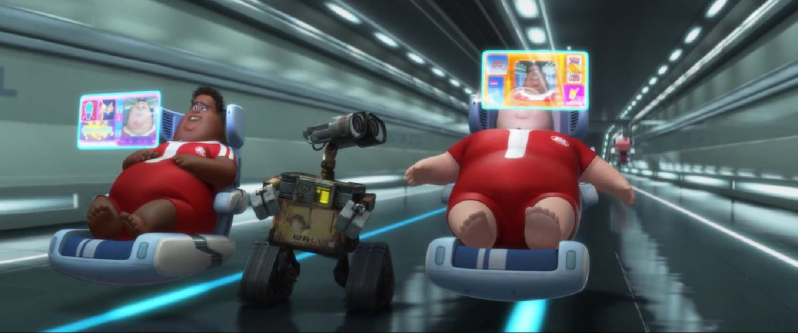
Is this the future of transport (and the human race)? Perhaps what is needed is integration between our Fitbits and our vehicles, where we aren’t allowed in until we’ve reached our activity goals. Image: Disney Pixar’s 2008 Wall-E movie.
What is the alternative?
There is unlikely to be a single technology to solve our transport problems. Judicious and conscious use of private vehicles and moving to EVs is not enough. For maximum results, we need really good alternatives to private vehicles – active and public transport – especially biking.
There are plenty of short trips for which we don’t need the car. We know that in urban areas at least 43% of vehicle trips are less than 5 km and 17% are less than 2 km (NZTA). Short distance car trips are particularly polluting as cold engines consume around 40% more fuel, produce more emissions, and increase engine wear and tear (NZTA). The opportunities for reduced emissions are significant even if the individual trips are small. Like Grandma used to say, “It all adds up, every little bit counts”. Australian studies indicate that shifting 5% of car trips to bicycle could reduce emission impacts by up to 8%.
The ‘school run’ is an excellent example of a short trip often ideal for biking and an excellent way to reduce car use. The impact of the ‘school run’ on congestion is evident when traffic jams and school both return on the same day.
If cycling to school was at 1990 levels, there would be up to 39,000 fewer car trips per day in Auckland during the morning peak. (Auckland Transport)
Getting kids cycling is part of creating change. If we make it safe and attractive for kids to ride their bikes, there is a good chance we can get more grown-ups riding too. There are plenty of small trips we could take by bike: shopping, running errands, meeting friends, going to appointments.
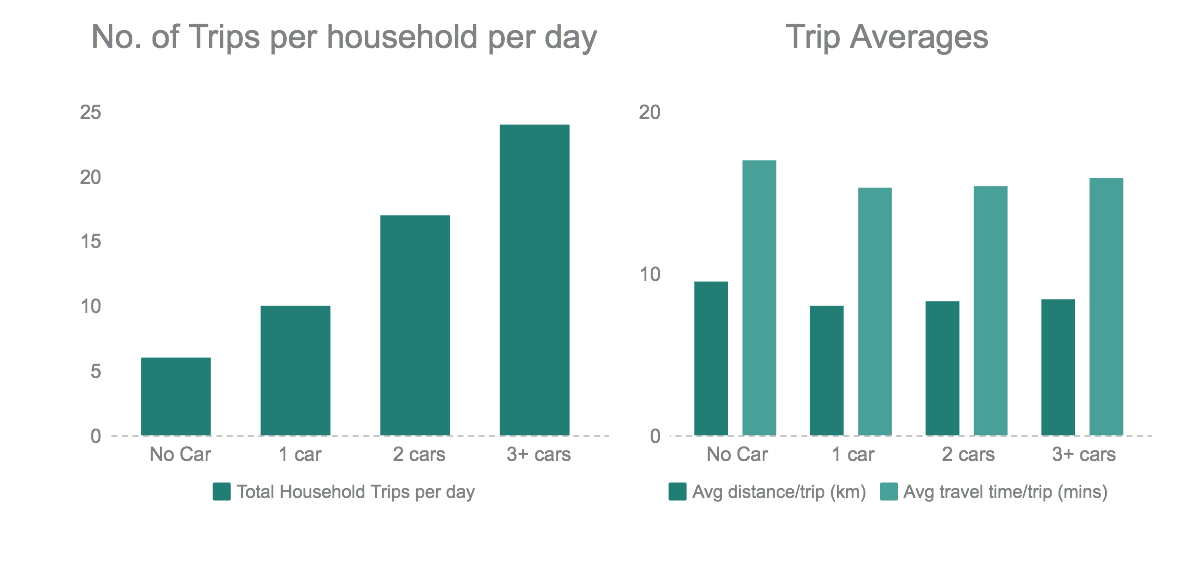
Half of the adults in NZ do not get enough exercise and only 10% of secondary school students meet the current recommendations of 60 minutes of physical activity daily. Biking is the third most popular recreational activity in New Zealand, proving it is accessible and enjoyable to many people. Combining cycling and transport is an ideal way to bring more physical activity into the lives of New Zealanders, and active transport has been shown to be four times more effective than sport in reducing obesity. Autonomous and shared vehicles may reduce congestion but will do nothing to improve activity levels.
The projected returns of investing in cycling are significant. Auckland research shows for every $1 spent on cycle improvements, more than $20 is saved due to fewer road traffic injuries, reduced emissions, the health benefits of increased exercise, and savings on fuel. Cycling to work can also increase employee productivity, taking the benefits from the street into the workplace.
Other Problems EVs won’t solve
Given current pricing structures and policies, EVs will remain a ‘lifestyle option’ for the well off who already have great access to transport choices. EVs will not reduce transport poverty, which occurs when transport costs absorb a disproportionate portion of the household income resulting in insufficient funds for other essential purposes like education, clothing, healthy food or medical costs.
In NZ household transport costs average $195 per week (mostly related to private vehicles) and make up the third biggest portion of average household expenditure after housing and food. Transport costs and options are a big factor in access to work, education, social, health and recreational opportunities (Statistics NZ). For people who are economically disadvantaged or do not drive, being able to cycle safely can mean being more able to search for work, access services and retain social connections. In Denmark, people in households with the lowest incomes make 26% of their daily trips by bike.
EVs could be a guilt-free license to use and own more cars. The data shows the more cars we have the more we drive. Not necessarily because it’s quicker or farther to travel.
As the number of cars increase so does the demand for roading infrastructure. Allocation of land for roading and car parking puts pressure on land prices and contributes to urban sprawl. When land is allocated to roading and parking, there is less for more economically or socially productive purposes including manufacturing, agriculture or housing. To find out more about this watch “how free is car parking”. Urban sprawl further increases dependence on private vehicles and demand for roading, perpetuating the problem. EVs will take up as much roading and parking space as other vehicles and perhaps even drive up demand.
Cycling infrastructure is a more effective use of land. When comparing re-allocating space from car parking to bike parking, Australian studies showed a higher return from bike parking. Many studies, including New York, Portland, Los Angeles, Dublin, UK, and New Zealand support the business case for reallocating space from cars to cycle lanes.
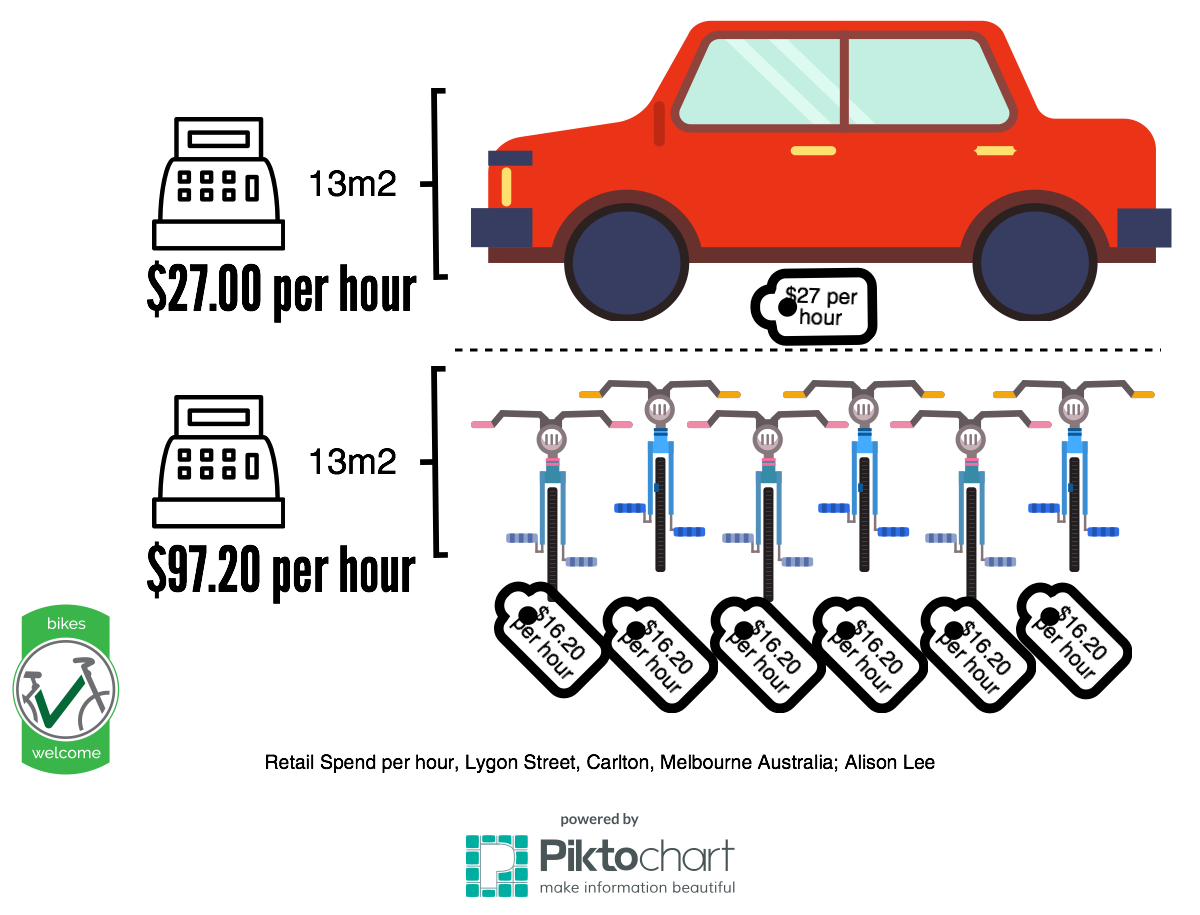
It’s time for a change
Cars aren’t bad, and neither are EVs. The problem is too many cars used too often. Bikes are part of a solution, a multi-faceted solution that requires change. I believe that change starts with individuals and is incubated by society and enabled by game changers including government, business and NGOs.
The drivers of change will come from all directions including bottom-up – individuals making personal choices and showing that change is possible.
“When it comes to sustainability, our capacity to copy provides opportunities and limitations. It keeps us hooked into the unsustainable patterns being demonstrated around us. However, it also means that people who display alternatives can be and often are copied, allowing the possibility for new patterns to form.” Professor Niki Harre, Psychology for a Better World: Strategies to Inspire Sustainability.
Here’s my story. These days, I like to use my bike (or feet) for 90% of my everyday trips. It wasn’t always this way, in fact, I loved driving high performance (and high emissions) company cars. That changed after watching the 2006 documentary ‘An Inconvenient Truth’.
My change in transport habits was aided by observing bike users in other countries, who rode in everyday clothes for everyday purposes. This helped me see a different way of doing things was possible (no Lycra or funny shoes for them). My riding started small, with a trip to the local shops or café and progressed to commuting and touring. It was my positive experiences of riding short distances which gave me the confidence and experience I needed to even consider biking to work.
A long twisty path with many turns and deviations has brought me from being a ‘rev head’ (aka petrol head or car enthusiast) to being a bike-use enthusiast: advocating for active transport, and founding the Bikes Welcome charitable trust aimed at growing everyday bike use, helping businesses recognise and value biking customers, and advocating for bike parking.
Bikes Welcome is focused on growing everyday biking for short trips, because everyone starts somewhere. To achieve the Bikes Welcome vision of ‘more Kiwis using their bikes everyday and everywhere’, we need to make riding a bike a normal everyday activity, like brushing your teeth. Bikes Welcome wants to make everyday bike use easier, more attractive and ‘normal’. We can grow everyday bike use by encouraging and enabling business and councils to recognise, value, and provide for bike users (beyond recreation).
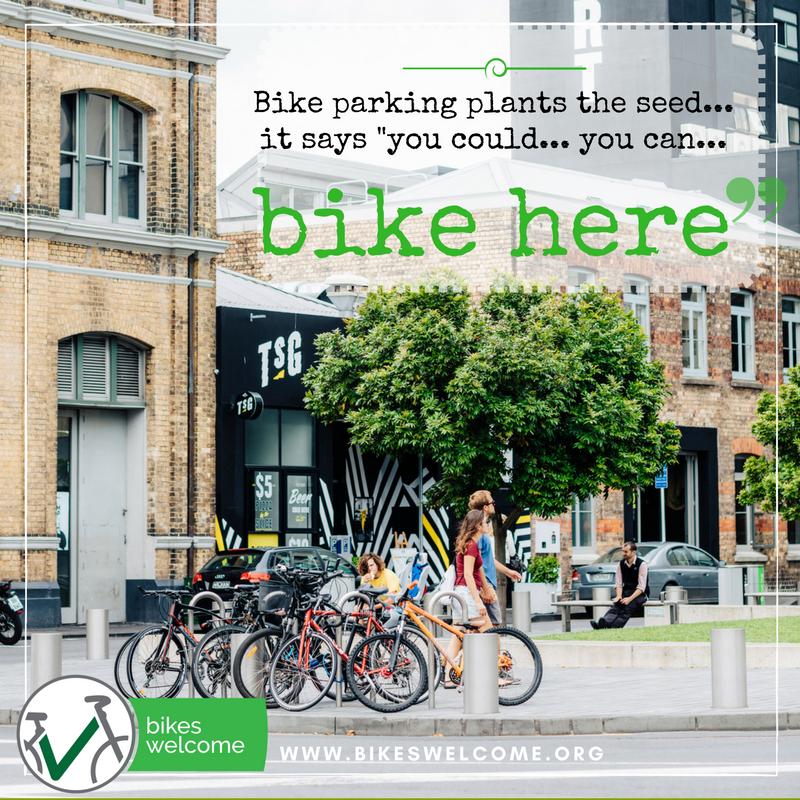
Each bike and bike rack we see sends a message and plants a seed, ‘hey, I could ride here’.
Bikes Welcome’s major focus is bike parking because it is an unmet need and a missed opportunity. Inadequate bike parking is frustrating, it facilitates bike theft and it leaves bike users feeling invisible. Bike parking is an opportunity to ‘market’ everyday biking. It signals that people can, and do, bike to everyday destinations. And bike parking could help plant the seed in people’s minds that bike use is possible and encouraged.
We are seeing change that tells us that people are willing to bike if we provide the right environment and encouragement. Auckland Transport does an excellent job of measuring cycling rates, and we know from their data, and many other examples around NZ and the world, that providing good infrastructure increases participation. But infrastructure cannot succeed in a vacuum, and there is a growing realisation that programs focusing on people and change are required as well.
We can learn so much from the successes of other cities around the world in moving from their traffic-choked status quo to a ‘new normal’ that includes high levels of walking and biking, like New York who have increased cycling by 80% in five years. Two things they all had in common – significant obstacles and strong, visionary leadership.
To achieve significant uptake in active transport modes including biking, we need total commitment and strong leadership with a belief in what is possible rather than mired in our history and current situation. Recreational cycling programs are fine but won’t reduce congestion and mostly appeal to people who are already active. We need different approaches and visionary leadership. We need change.
Change comes when a problem can’t be ignored any longer, and when we apply creativity to finding solutions and leadership to implementing them. And when we use all the tools at our disposal to change how people think, choose and act. We can let our leaders know that we have an appetite for positive change and for transport strategies that reach beyond the private vehicle. We can make it personal: encourage bike use at home and at your business. We can choose to be part of a change that will reduce emissions and congestion, as well as improve our health and quality of life. How? Don’t just wait for future technological solutions, grab yourself an e-bike, support pro-bike-use initiatives like Bikes Welcome and create change.

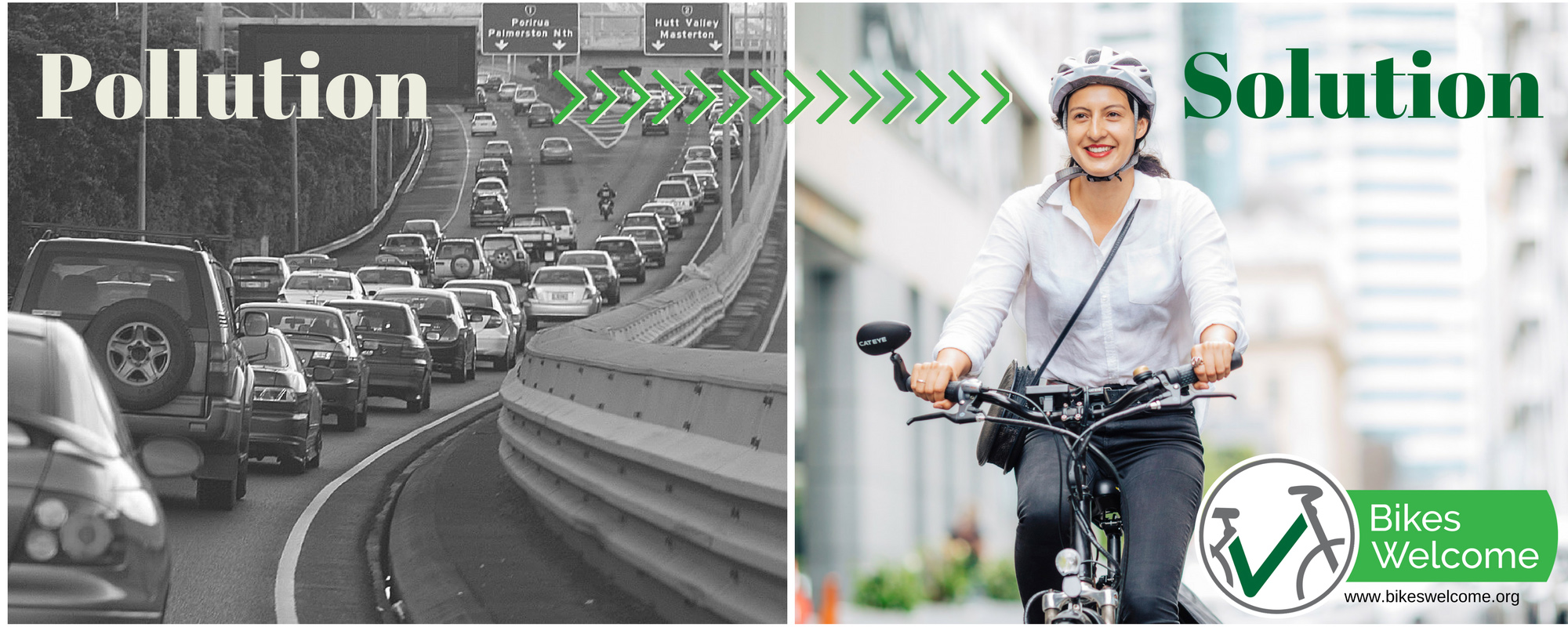

Leave a comment